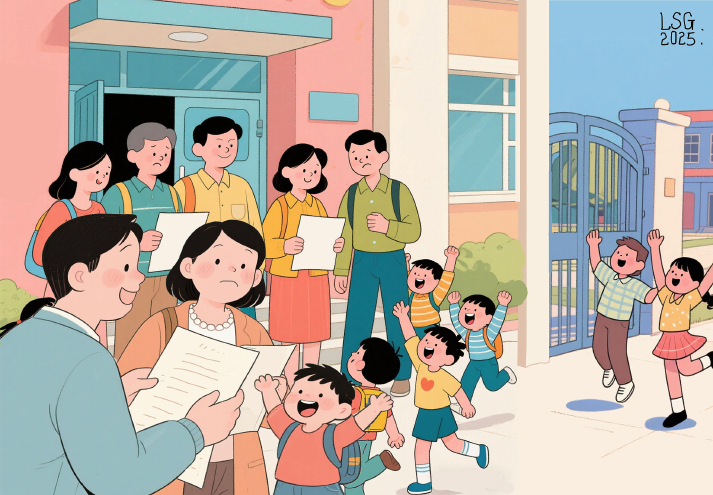| China |
| Spring and Autumn Breaks: Boon or Bane? | |
|
|
 (LI SHIGONG)
On September 16, nine government bodies including the Ministry of Commerce jointly issued an official document outlining measures the government will take to bolster the country's service consumption. Encouraging primary and secondary schools across the country to introduce spring and autumn breaks is one of them. These short breaks are to be added to the spring and autumn terms while keeping the total instructional hours for the year unchanged by cutting the traditional winter and summer vacations. The news soon sparked heated discussions. Yuan Wenliang (Fjsen.com): In 2013, there was already a proposal to explore ways to arrange spring or autumn breaks for primary and secondary school students, included in a State Council document guiding national leisure and tourism. Zhejiang, Guangdong and Hubei provinces have piloted spring and autumn breaks. In some districts of Hangzhou, the capital city of Zhejiang, schools offered 11 consecutive days of autumn break this year, including the National Day and Mid-Autumn Festival holidays. Although the two breaks give Chinese families more travel options—parents can take paid leave to plan a family trip and children can enjoy a mid‑semester break that pushes them closer to nature—many parents worry that, amid the intense pressures of high-school entrance exams and college entrance exams, the breaks might lead to poorer academic performance. In families where both parents work, parents are often unable to be at home with their children during the holidays. Therefore, when exploring ways to implement spring and autumn breaks, plans ought to be tailored flexibly. Editorial (Gmw.cn): With the total number of class hours remaining the same, introducing flexible spring and autumn breaks helps not only stimulate tourism spending but also enhance students' overall education because of the exposure to nature and scenic spots. Short and segmented breaks help stagger travel, easing the strain of lump‑sized holiday periods and fostering higher‑quality growth in the tourism sector. They can also improve the efficiency of school education. Prolonged study can cause fatigue, while overly long winter or summer holidays may create gaps in knowledge continuity. Introducing brief intra-semester breaks enables a healthy balance between study and rest, supporting both mental and physical wellbeing. Li Zhe (Shenzhen Special Zone Daily): Spring and autumn breaks have triggered a lot of controversy. Some parents have expressed concerns that too many holidays would leave children with insufficient study time. This is a reasonable worry, which calls for each region to tailor the two breaks based on their respective conditions. For example, in areas where winter is relatively mild, the normal winter vocation can be shortened while in regions where summer is not excessively hot, the summer holiday can be shortened. Even within the same province or city, the spring and autumn breaks can be staggered. Before crafting specific policies, schools should consult teachers, students and parents to design a break that satisfies all stakeholders as much as possible. For primary and secondary school students, in addition to school instruction and family education, interacting with nature is also an integral part of their healthy growth. In spring and autumn, the climate and environment are ideally suited for travel. Schools and parents should not regard outdoor trips merely as leisure or a waste of time; they, too, are essential nourishment for a child's growth. Copyedited by G.P. Wilson Comments to yanwei@cicgamericas.com |
|
||
|
||||||||||||||||||||||||||||
|